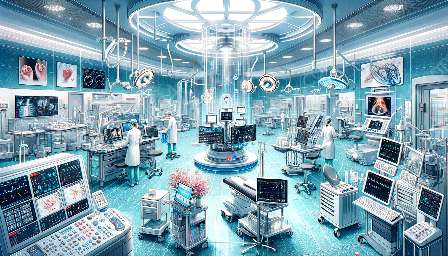Neural interface technology has witnessed tremendous advancements due to the crucial role played by bioengineering in driving innovations in medical devices. Bioengineering, the application of engineering principles to biological systems, has revolutionized the development of medical devices, leading to breakthroughs in neural interface technology. This article delves into the intersection of bioengineering and medical devices, highlighting the significant impact of bioengineering on the field of neural interface technology.
The Significance of Neural Interface Technology in Healthcare
Neural interface technology encompasses the design and development of devices that interface with the nervous system. These devices hold immense potential in the field of healthcare, as they enable direct communication between electronic systems and the nervous system. By interfacing with the nervous system, such devices can be used for treating neurological disorders, monitoring brain activity, and restoring sensory or motor function.
Understanding Bioengineering and Its Impact on Medical Devices
Bioengineering, also known as biomedical engineering, integrates principles from engineering and biology to develop solutions for healthcare and medical challenges. It encompasses a wide range of disciplines, including bioinstrumentation, biomechanics, biomaterials, and bioinformatics, among others. The application of bioengineering principles has significantly advanced the field of medical devices, leading to the development of innovative technologies that have a profound impact on patient care and treatment outcomes.
Revolutionizing Medical Devices Through Bioengineering
The marriage of bioengineering and medical devices has resulted in paradigm shifts in healthcare. Bioengineers employ their expertise to design and create medical devices that are tailored to meet the specific needs of patients. Whether it's the development of advanced prosthetics, implantable devices, or diagnostic tools, bioengineering has been instrumental in enhancing the efficacy and precision of medical devices.
The Role of Bioengineering in Neural Interface Technology
Bioengineering plays a pivotal role in the advancement of neural interface technology. By leveraging knowledge of neural physiology, signal processing, and material science, bioengineers design and develop neural interface devices that establish seamless communication between electronic systems and the nervous system. These devices are engineered to be compatible with neural tissues, ensuring biocompatibility and long-term functionality.
Building Bridges Between Biology and Technology
One of the key contributions of bioengineering to neural interface technology is the ability to bridge the gap between biological systems and electronic devices. Through interdisciplinary collaboration, bioengineers work in tandem with neuroscientists, clinicians, and technology experts to create neural interface devices that are safe, reliable, and effective. This collaboration leads to the development of cutting-edge medical devices that have the potential to transform the landscape of healthcare.
Challenges and Future Prospects
While bioengineering has propelled the advancement of neural interface technology, challenges such as biocompatibility, long-term stability, and signal processing intricacies continue to be areas of active research. However, ongoing research and innovation in bioengineering hold promise for overcoming these challenges and unlocking new possibilities for neural interface technology.
Conclusion
The synergy between bioengineering and medical devices has yielded remarkable progress in the field of neural interface technology. As bioengineering continues to drive innovation in medical device development, the future holds the promise of even more sophisticated and reliable neural interface devices, ultimately improving patient outcomes and quality of life.


